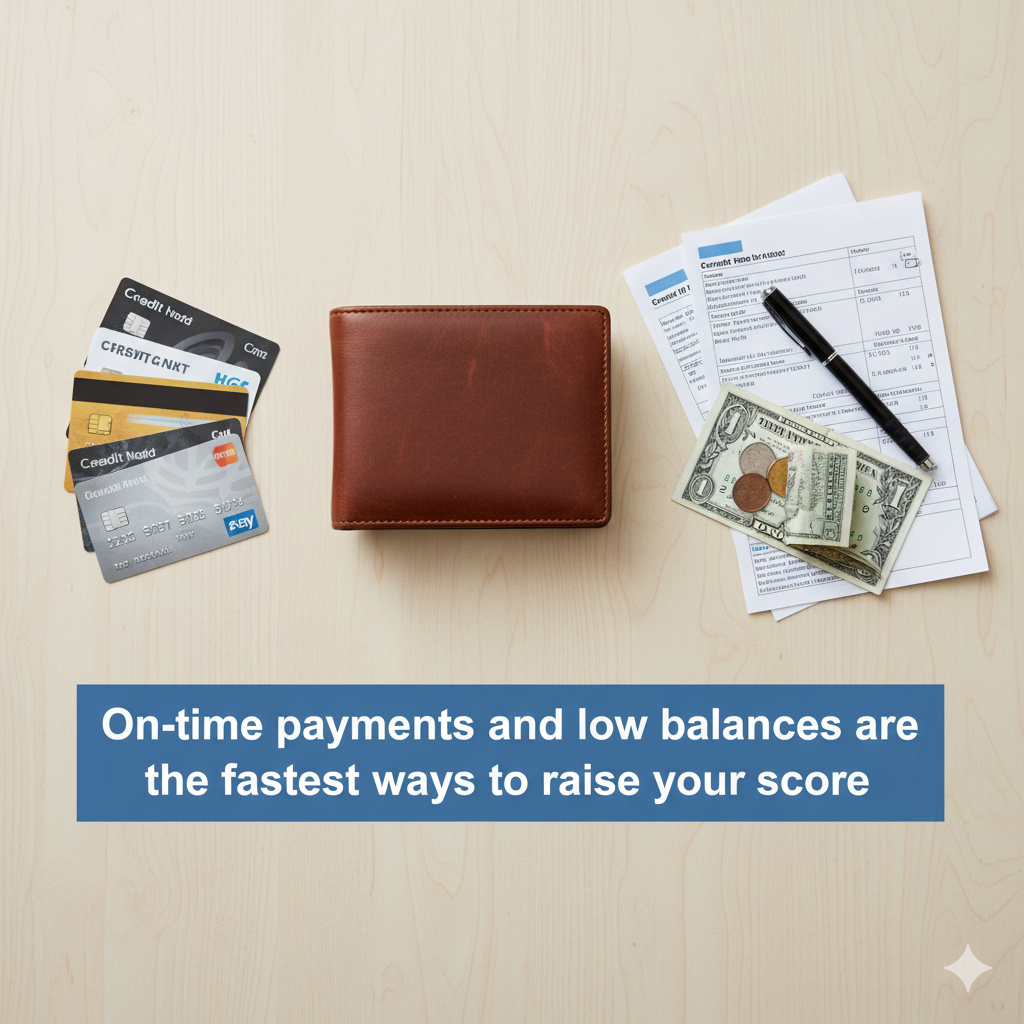How to Improve Your Credit Score in 6 Months
Simple, proven strategies to boost your score step by step — no complicated jargon.
Why your credit score matters
- Better loan approvals: Higher scores = better chances of approval for loans, mortgages, or cards.
- Lower interest rates: A strong score can save you thousands over time.
- More opportunities: Landlords, employers, and even insurers sometimes check your score.
6-month credit score improvement plan
- Month 1: Check your credit report Get a free copy from major bureaus and dispute any errors. Incorrect entries drag your score down.
- Month 2: Pay bills on time — every time Set reminders or autopay. Payment history makes up ~35% of your score.
- Month 3: Lower your credit utilization Keep balances below 30% of your credit limit (10% is even better).
- Month 4: Avoid new hard inquiries Don’t apply for multiple new credit cards unless necessary — each hard check lowers your score slightly.
- Month 5: Diversify gently If safe, add a mix (like a small secured card or credit-builder loan). Lenders like variety in credit history.
- Month 6: Keep accounts open & old Don’t close older cards — longer credit history improves your score.
Extra tips for faster progress
- Pay twice a month: Keeps utilization lower when reported to bureaus.
- Use reminder apps: Never miss a payment deadline.
- Ask for a limit increase: More available credit = lower utilization (if you don’t overspend).
- Become an authorized user: A trusted family member’s card with good history can boost your score.
FAQs
How many points can I realistically gain in 6 months?
Many people see a 50–100 point increase with consistent effort, especially if they had negative marks to fix.
Will paying off debt instantly raise my score?
Yes — especially credit card balances. Lowering utilization is one of the quickest ways to see results.
Should I close unused credit cards?
Usually no. Older accounts improve your credit age. Keep them open (as long as they don’t charge high fees).


